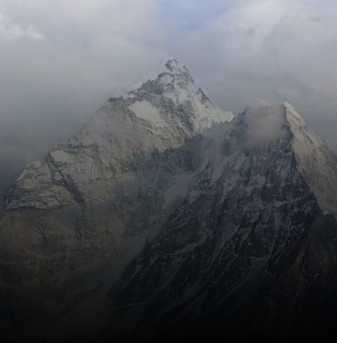
- admin
- June 2, 2025
Table of Contents
Mount Everest is not just the tallest mountain on Earth; it’s a symbol. A towering challenge that has come to represent the ultimate test of human aspiration, endurance, and courage. When we look back at the 1924 British expedition of George Mallory and Andrew Irvine, their journey becomes more than a mountaineering story—a powerful metaphor for humanity’s eternal struggle to reach beyond what seems possible.
This perspective is thoughtfully explored in Tyler Long’s detailed book Expedition to the Unknown: Mallory and Irvine, which dives deep into the historic 1924 Mount Everest expedition and the climbers’ lives behind it. Long’s account offers more than just facts—it captures the spirit, challenges, and enduring mystery of one of history’s most iconic climbs.
The Mountain That Calls to Us All
By the early 20th century, the Poles had been conquered, and the last great frontier left was Everest. Known as the “Third Pole,” it symbolized the final, overwhelming challenge in a world rapidly shrinking through exploration. Standing at 29,031 feet, Everest was a natural icon for ambition: vast, unforgiving, and unreachable by conventional means.
Mallory famously said he wanted to climb Everest “because it’s there.” That simple phrase captures something essential about human nature—our drive to challenge the limits, to seek meaning not because it’s easy or practical but because the challenge itself calls to us. Everest embodies that call.
Mallory and Irvine: The Human Face of the Impossible
George Mallory was a seasoned climber shaped by years of climbing Britain’s most challenging peaks and the Alps. Andrew Irvine was younger, a brilliant engineer whose mechanical skills gave the team a crucial edge in dealing with the early, fragile oxygen equipment.
Their partnership represented the blend of experience, innovation, physical grit, and intellectual problem-solving. But their expedition was about more than just conquering a mountain. It was a test of the human spirit, a microcosm of what it means to strive in the face of uncertainty and overwhelming odds.
The 1924 expedition was a gamble against nature itself. With rudimentary gear, unpredictable weather, and a mountain that has claimed many lives, Mallory and Irvine faced conditions that tested every aspect of human endurance. Their disappearance on the final ascent turned their story into one of the great mysteries and tragedies of exploration, but it also immortalized their spirit of pushing beyond limits.
Everest is the Ultimate Symbol of Struggle and Ambition
Mount Everest stands as a metaphor for any seemingly impossible goal. The physical mountain—cliffs, icefalls, avalanches—mirrors the obstacles and setbacks we face in our personal and collective ambitions.
Like Mallory and Irvine, every human endeavor involves:
- Preparation and sacrifice: Years of training, planning, and leaving behind comfort zones.
- Collaboration and trust: Mallory and Irvine depended on each other’s strengths as we relied on our communities and teams.
- Facing fear and uncertainty: The mountain’s unpredictable storms and treacherous terrain echo the unknowns we confront when pushing new boundaries.
- Resilience and perseverance: Their relentless ascent despite danger mirrors the grit needed to continue despite setbacks and failures.
Their climb reminds us that sometimes, the value lies in success and the courage to attempt the climb.
The Spirit Behind the Climb
Why do we continue to strive for goals that seem unattainable? Mallory’s answer goes deeper than physical conquest: “The struggle is the struggle of life itself, upward and forever upward.”
Everest is a metaphor for life’s journey—our perpetual push upward against gravity, adversity, and doubt. It challenges us to ask: What does it mean to live fully? Is it in the destination or the effort?
Mallory and Irvine‘s expedition embodied joy in struggle, a reminder that there is meaning in the pursuit, even when success is uncertain.
The Enduring Mystery and Inspiration
Mallory’s body was found in 1999, nearly 75 years after he vanished, but Irvine’s fate remains unknown. We may never know if they reached the summit. This uncertainty keeps their story alive, symbolizing human endeavor’s ambiguity—sometimes victory and tragedy are intertwined.
Their story continues to inspire climbers and dreamers alike. It captures a fundamental truth: The human spirit reaches upward not for easy triumph but because it is compelled to try, dream, and dare.
Everest Today: A Continuing Metaphor
The mountain has changed—climbing technology has improved, routes have become safer, and thousands have summited. But Everest still holds the same metaphorical power. Each climber who steps onto its slopes faces the same elemental challenge: confronting limits and striving beyond them.
Whether in personal growth, scientific breakthroughs, or social progress, the “Everest” we face can take many forms. Mallory and Irvine’s story reminds us that the journey toward the impossible is a triumph.
What Can We Learn From Mallory and Irvine?
Their expedition teaches us:
- Dream big, even if the odds are against you.
- Value preparation, but be ready to adapt and persevere.
- Lean on others; no great endeavor is solitary.
- Respect the power of nature and forces beyond control.
- Find joy in the struggle, not just in reaching the goal.
Ultimately, Mallory and Irvine’s climb symbolizes the essence of human endeavor—our unyielding desire to rise, explore, and push beyond boundaries.
Expedition to the Unknown: Mallory and Irvine by Tyler Long captures all this, providing a gripping, thoughtful narrative that makes the mountain and its climbers come alive—a literal adventure and a profound metaphor for what it means to chase the impossible.